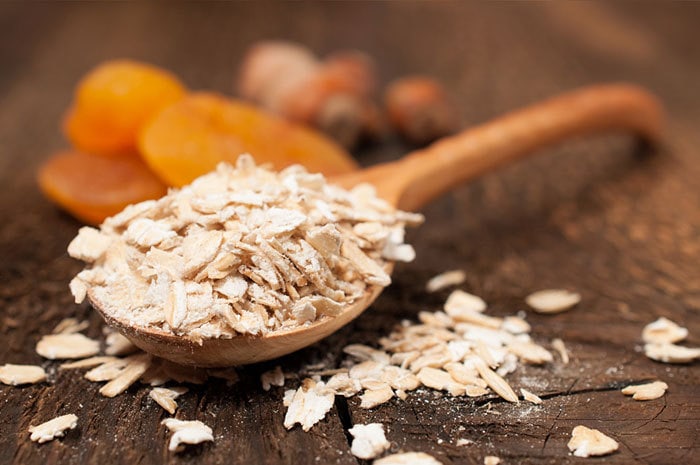
Written By: Sofia Layarda, MPH
Title: Master of Public Health
Alumni: University of California, Berkeley
Last Updated on:

Mention a healthy hot breakfast, and for many people the image of a steaming bowl of hot oatmeal comes to mind. Oatmeal bowls are becoming increasingly popular in fast food restaurants, with places like Dunkin Donuts, McDonalds, and even Starbucks offering them on the menu. Are they the real deal – the same thing you could get from making your own bowl of oatmeal at home?

Fast food oatmeal tends to have many additives. We’ve listed some common ones below:
A serving of McDonald’s Fruit & Maple Oatmeal clocks in at 290 calories, 4.5 g fat, 5 g fiber, and 57 g carbohydrates It also has 32 g of sugar (8 teaspoons); almost as much as you’d find in a typical can of soda (39 g). Dunkin Donuts’ oatmeal offerings are not much better, clocking in at 22 g and 28 g of sugar. One of the worst offenders is Dunkin Donuts’ Brown Sugar Flavored Oatmeal with Dried Fruit Topping: 300 calories, 61 g carbohydrates, 470 mg sodium, and 28 g sugar – even with the use of sucralose, an artificial sweetener.
The oatmeal products from Dunkin Donuts and McDonalds both contain caramel coloring. This is not the kind of caramel you get at home by melting sugar in a saucepan over the stove, but is instead made by reacting sugar with ammonia (and/or sulphites) under high temperatures and high pressure. The process of making caramel coloring with ammonia results in contaminants that have been identified as possible carcinogens.
Another ingredient that appears often in fast food oatmeal is guar gum, which is a thickener. Guar gum should not be needed since oatmeal itself is naturally high in soluble fiber, which gives cooked oatmeal that characteristic thick, stick-to-your-ribs texture.
For store-bought oatmeal products, the “plain” or “original” flavors tend to have less sugar and sodium and fewer ingredients than the flavored varieties.
That doesn’t mean all “plain” or “original” flavors are good choices; it is still important to take a look at the ingredient list. Some varieties contain only oats, while others have added salt, flavorings, coloring, or additives. For example: Quaker Oats Quick Oats and Old Fashioned contain oats and nothing else. Compare this to the Quaker Oats Instant Oatmeal, which in addition to oats also contains oat flour, calcium carbonate, salt, guar gum, and caramel color. Even some organic products use guar gum, such as Mom’s Best Naturals Pomegranate Multigrain.
Like fast food versions, many store-bought products – such as the Better Oats varieties MMM…Muffins and Oat Fit – contain caramel coloring.
Some products – such as Better Oats’ Oat Fit Maple & Brown Sugar – contain artificial sweeteners such as sucralose or acesulfame potassium. Be wary of claims such as “no sugar added.”
Some quick oats products are not labeled “instant,” but they still cook within minutes on the stove or using the microwave. Oatmeal takes very little time to cook, so buying instant oatmeal isn’t the best investment of time or money. A serving of oatmeal is 1/2 cup dry. Generally, instant oatmeal packets give you about half of that. Buy plain oats, add a cup of milk or water, and you can still get a very similar product to the instant packets, but cheaper and without additives.
If you have a sweet tooth and crave something sweet and crunchy with your oatmeal, top the cooked oatmeal with fresh fruit (grated apple, sliced bananas, or frozen berries) and nuts or seeds. You can also make refrigerator oatmeal, where you mix rolled oats with milk or yogurt and let it sit in the fridge overnight. The next morning, enjoy this cold or warm, topped with fruits and nuts.
Alumni: University of California, Berkeley – Sofia believes in bringing back fun and pleasure into everyday eating. She loves cooking, and is constantly experimenting with ingredients, creating recipes and trying them out on family and friends. Her latest interest lies in finding realistic and practical ways of environmentally-friendly food/eating habits.
healthy dine-out, home cooking, oatmeal, whole grains
Super Bowl 2013: Cajun and Creole Snacks for the New Orleans Super Bowl